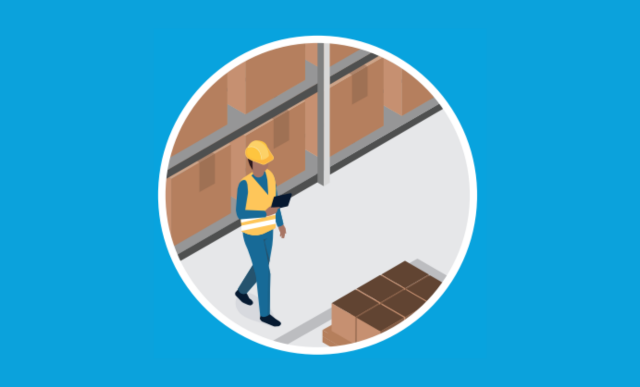How to Use Data Collection to Run a Remote Warehouse
Five Ways to Expand Your Warehouse
Meet the Experts
By Robert Brice, President and CTO, RFgen
Manufacturers currently stand in a unique position. Their current environment is riddled with challenges: supply chain issues, worker shortages, and enhanced safety protocols for consumers and employees alike. In addition, there has never been a better — or more necessary — time to improve business processes. Increased customer demand coupled with longer delivery times has led many organizations to turn to automation. Those who don’t, risk falling out of the competitive race entirely.
Further, international expansion, outsourced manufacturing processes, and acquisition have added an additional layer of complexity. In fact, 87% of warehouse executives are planning to expand their warehouse size by 2024. Additionally, 82% plan to add more warehouses within the next few years.
Explore related questions
No longer can the manufacturing process rely on a one-warehouse operation. Organizations must rethink traditional approaches to addressing warehouse systems like inventory management, shipping and receiving, and more. Prioritizing data collection across all inventory operations, rather than per location, will be vital.
The remote warehouse of the future will be better prepared to automate and efficiently compete on a global level. These five steps will help your organization expand beyond its walls to improve warehouse efficiency long term.
1) Mobile Inventory Management
Inventory management is an important piece of the warehouse process. Yet, many facilities have trouble tracking inventory due to outdated manual methods. When inventory is counted using antiquated methods like data entry or a spreadsheet, it’s hard to ensure accuracy, let alone figure out trends and issues across multiple locations.
Take for instance, the act of cycle counting. For many warehouses, cycle counting is an important aspect of inventory management. However, manual cycle counting is inefficient and can drain resources. Each manual cycle count takes approximately two seconds per item, at only 80% accuracy.
The automation of inventory control allows for real-time visibility and reduction of errors. Through a suite of mobile inventory solutions, including barcoding, apps, and hardware, warehouses can systemize cycle counting and other inventory tracking metrics. The result? A reduction in cycle counting time to 0.6 seconds per item, with more than 99.5% accuracy.
In addition, mobile inventory management can help streamline and resolve potential issues. For example, during cycle counts, CyroLife, a biomedical manufacturer, would find products nearing expiration. Through the use of mobile inventory software, the sales reps were able to track the product and leave a comment asking customer service to generate a Return Merchandise Authorization. This led to transparency from production to delivery and alleviated administrative burden for the organization.
Mobile inventory technology can also connect with other software to streamline administrative tasks. For instance, CryoLife sales representatives have the ability to collect signatures and submit images of inventory on their phones. The software will then update SAP automatically for increased efficiency.
2) Mobile Barcoding
Digitizing inventory and data collection processes is no longer an option for forward-thinking manufacturers. That’s where mobile barcoding comes into play. Mobile barcoding drives efficiency, accuracy, and productivity in the warehouse while giving real-time visibility into operations.
Yet, many companies with SAP still rely heavily on manual inventory processes. Often, this is due to cost considerations, complexity, and accessibility barriers. An easy solution is to employ barcode software, thereby optimizing workflows and reducing errors.
Mobile barcoding solutions automate data collection through automated identification and data capture. It gives visibility throughout the warehouse lifecycle — from raw materials to delivery.
A manufacturer of concrete construction equipment was crippled by slow, inefficient warehouse automation. They desperately needed an SAP-certified replacement, and they needed it fast. Through the adoption of mobile barcode scanning, picking accuracy increased by 42%. What could you do with that kind of increased production?
Mobile barcoding doesn’t only help with inventory. It can also be useful in times of crisis and disruption, as witnessed by the current COVID-19 pandemic. For many warehouses, huge adjustments had to be made. Social distancing and increased sanitary cleaning requirements became top priority. Organizations are looking for the best ways to protect their employees while still delivering a timely, quality product.
Handheld scanning devices can allow workers to scan barcodes from up to 70 feet away. Not only does this allow warehouses to provide proper social distancing, but also protects employees from potential injury when moving pallets. Further, handheld units can be easily disinfected and cleaned between shifts.
Mobile barcoding helps minimize new worker training time. With intuitive mobile apps, training time can be reduced by as much as 80%. In the current workforce landscape, this will be essential to organizations looking to fill demand.
3) Asset Tracking Software
Supply issues and delivery fluctuations are another key component affecting today’s warehouses. In fact, 40% of warehouse executives cite faster, more transparent delivery as a top growth driver. This trend is drastically impacting expansion plans. Factor in current supply chain shortages, and the need for tracking technology has never been more important.
Mobilization of tracking technology allows you to incorporate GPS integration, on location check-in/check-out, asset monitoring, and more. The result? Technologically connected warehouse operations with access to the true status, condition, and location of every asset.
Those who embrace asset tracking early will be ahead of the competition. While the majority understand the importance and impact of tracking technology, only 24% of organizations currently have the technological capability to implement tracking technology within the next few years.
4) Offline Data Collection
Automation technologies are the way of the future. But what happens if your connectivity is spotty at best? Or if you have remote field operations with no network access? As warehouse and field operations continue to expand, connectivity issues will surely emerge. An organization must address these issues from the beginning as they work to achieve growth goals.
Offline data collection needs, due to either unreliable network access or complete lack of access, can be a regular challenge for maintaining consistent inventory management processes. That’s why many organizations often use paper tracking, either viewing it as more dependable or simply not knowing of a better option.
For CryoLife, their sales representatives often went into a hospital where Wi-Fi or cell phone coverage was unavailable. That’s why they chose a mobile barcoding software that allows their employees to download inventory information to their device and continue to scan inventory, even when offline. Then, once connectivity is restored, the app sends data immediately to their SAP system to process.
The same was true for a California Utility Company that had inventory in multiple small warehouses across 50,000-square miles of territory. By enabling automated offline field mobility, their employees could continue to track assets and maintain inventory in real time. The company can now avoid costly scheduling mistakes with repair crews, collect productivity information to analyze staffing needs, and mitigate loss of high-value inventory items, no matter where they are. Plus, all this integrates seamlessly into their SAP solution.
Smart SAP-based organizations will deploy a mobile data collection solution that includes seamless offline availability features that overcome network connectivity issues.
5) SAP Security with Mobile Barcoding
As warehouses continue to expand, security will be key. With so much information at our fingertips, how can we ensure it isn’t susceptible to a breach?
It’s important that SAP users coordinate with their vendors to ensure a high level of security is in place when deploying automation technology like mobile barcode scanners and inventory tracking. Your selected vendor solution should never impair your current SAP security. After all, your SAP system contains a great deal of important information that can be potentially dangerous when placed in the wrong hands.
Here are some important things to keep in mind as you add mobile technology to your warehouse operation:
- Make sure the software and all apps serve as a proxy, meaning it displays and connects to only what your employees need to do to complete their tasks, and nothing else.
- Ensure the software has safeguards in places like single sign-on and traffic encryption.
- Discuss security measures and proactive strategies with any potential software vendors. If they don’t have a plan in place, look elsewhere.
Creating a mobile-focused warehouse must be coupled with the need for a secure data environment across all company operations. Ensure you’re not only looking for increased efficiency but also a robust security plan ready to prevent cyberattacks and threats.
The Need to Automate is Real
The need for warehouse automation and real-time connectivity is a priority for right now. That’s why 80% of warehouse executives plan to invest in new technology in order to stay competitive.
Gone are the days of manual inventory entry and paper tracking. The evolution into an adaptable, state-of-the art digital manufacturing enterprise begins with real-time monitoring and optimized data collection practices.
Forward-thinking warehouses will embrace mobile barcoding, asset tracking, and other automated technologies to form a suite of solutions that reduces complexity, improve efficiency, and streamline operations. They’ll look for proactive security plans and integration into their SAP operations for enhanced visibility.
The result will be a growth-oriented, wholly connected warehouse operation that can handle complex market trends now and embrace the remote warehouse operations of the future.








